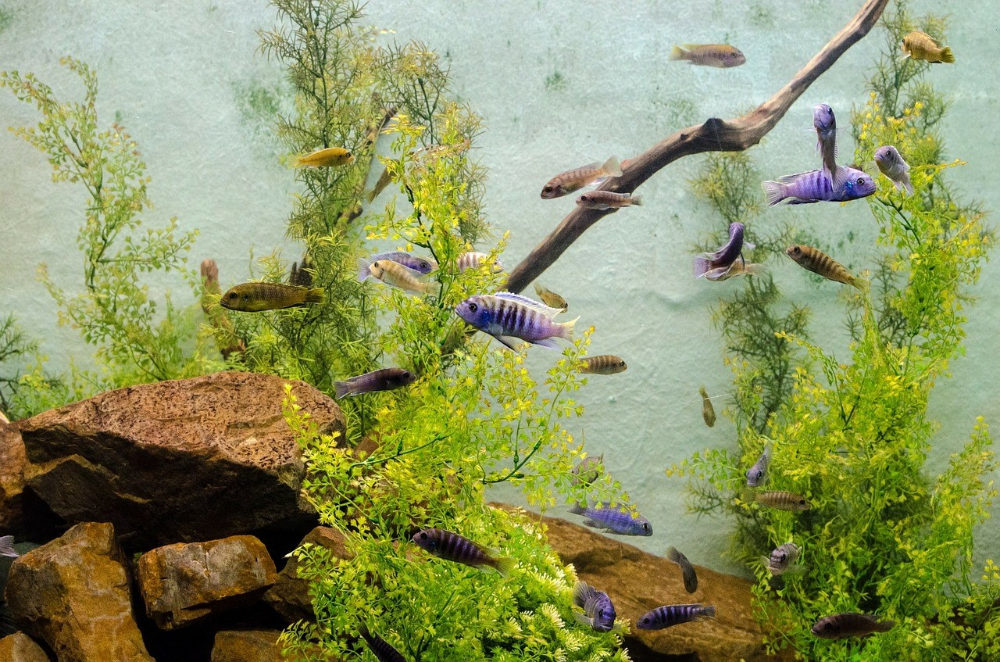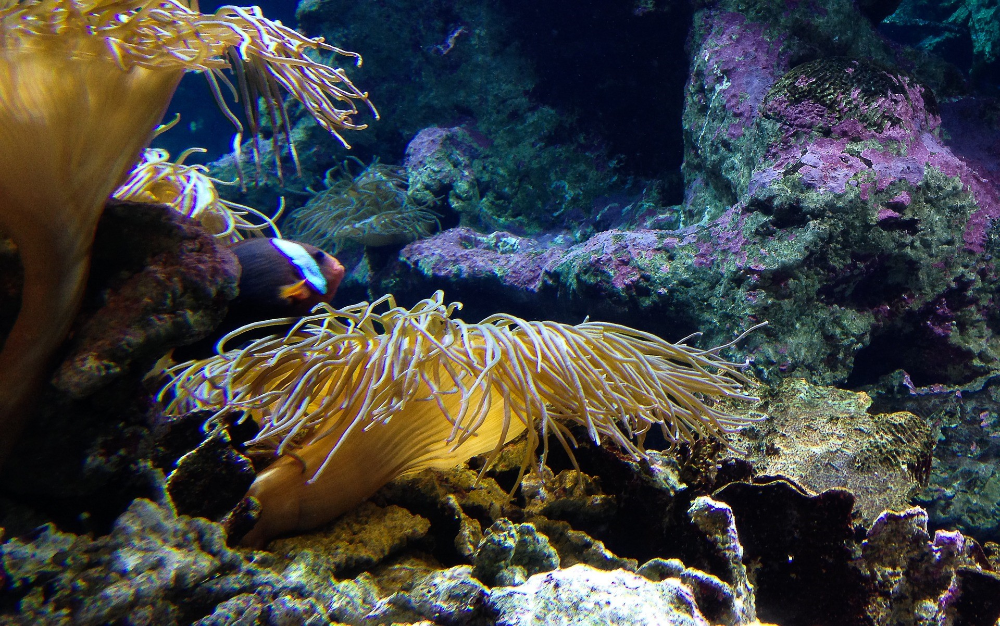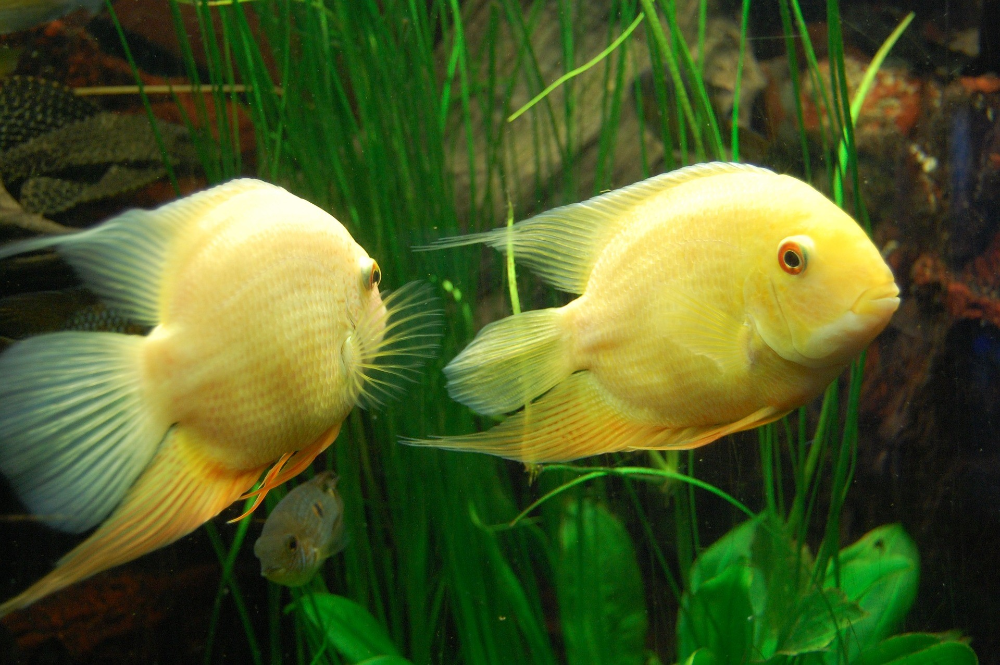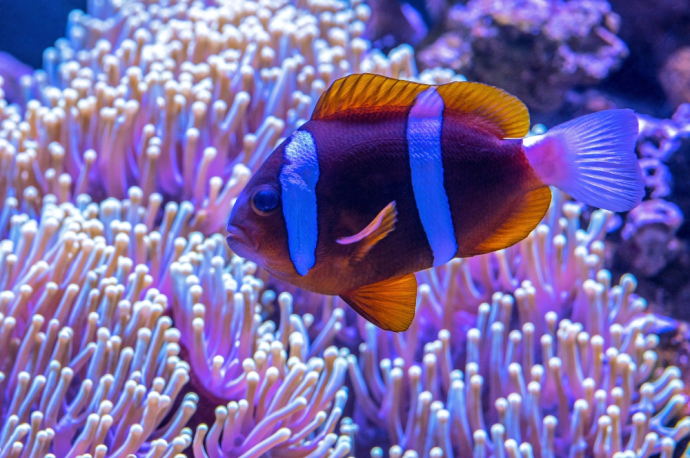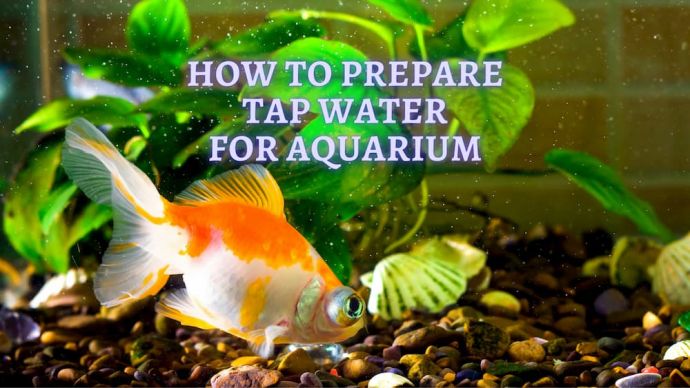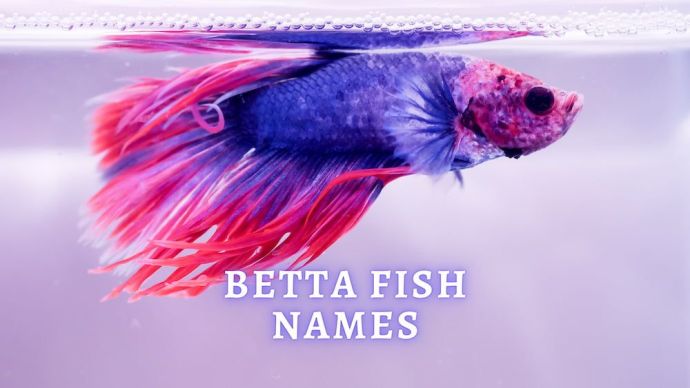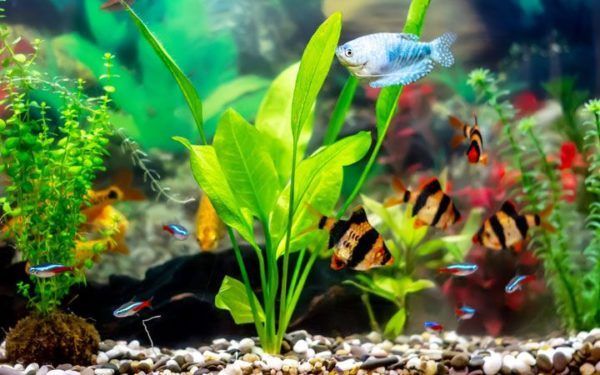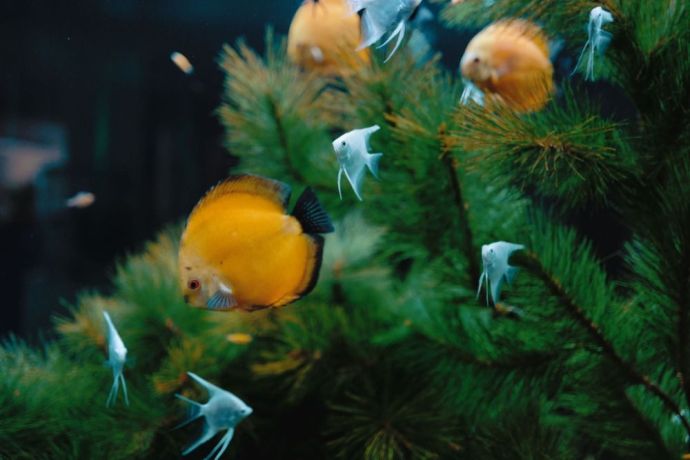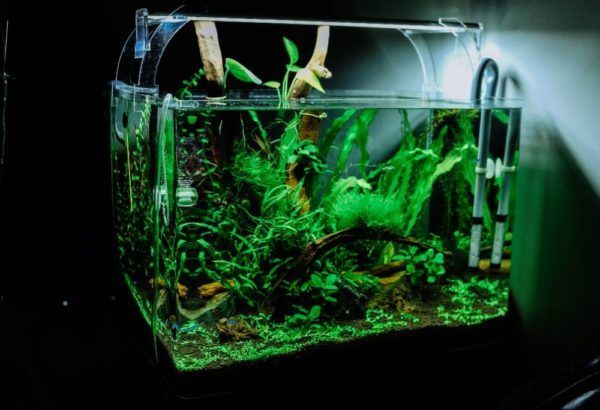How to Get Rid of Brown Algae (Diatoms)?
Written by:
Author: Vicki Smirnova
Vicki Smirnova is a professional writer and editor who adores animals and helps readers get along well with their pets. She has been working in digital media for more than 5 years and has great experience writing content about lifestyle, including pets. Vicki specializes in dog health and nutrition, cat feeding, dog training. She is an aquarium lover and is passionate to write about fish care at home. Also, Vicki headed several websites and worked as a news editor.
View all 244 articlesLearn about our editorial process and veterinary review board.
Viewed: 9677
Updated on: 05/07/2021
Brown algae are not the most dangerous enemy of the aquarium. Getting rid of them is very easy if you follow simple rules. However, if you do not pay enough attention to the aquarium, then diatoms will quickly cover all the decorations, plants, and glass in the aquarium with a nasty brown coating.
Diatoms are considered the most sensitive algae, and they only develop well in aquariums, where they have no competitors. In aquariums where brown algae grow, as a rule, there is always an increased content of organic matter in the water and weak lighting, insufficient for the growth of higher plants and other types of algae, but it is quite suitable for diatoms to reproduce. There are also brown algae in aquarium water where there are no living plants.
What is Diatom Algae?
Diatoms are a class of lower plants and an essential component of phytoplankton and a food source for many aquatic inhabitants, thus playing an indispensable role in nature. There are both marine and freshwater species.
The cover they form actively damages the appearance of the aquarium. These brown algae in fish tank are not dangerous to fish, and in the early stages, they do not cause significant harm to aquarium plants. The cover of algae becomes black due to the constant build-up of layers on top of each other. In this case, the lower tier becomes challenging to remove. It seems that the leaves are covered with earth or black sand. At this stage, diatoms already become dangerous for living plants, because the dense coating on the leaves reduces the efficiency of the most crucial process for plant life: photosynthesis. In the end, it can lead to the death of the plant. Diatoms spread so quickly that new leaves are immediately affected by them.[1]
Varieties of Diatoms
In the 150 years since the diatom species’ discovery, more than 300 genera have been officially discovered, including 5,000 species. But it is believed that their number, including those still unexplored, is 10,000-20,000 varieties. The whole species is divided into two classes: centric and pennate diatoms.[2]
All types are divided into 4 characteristics:
- Colony type
- Internal structure of cells
- The structure of the shell
- The amount and shape of the chloroplasts contained
The most common species in the natural environment are considered to be navicula, pinnularia and cymbella.
Navicula
Navicula – an order of unicellular algae – belongs to the department of diatoms. It makes up a significant part of the underwater plankton. Discovered by Ernst Haeckel, this type of algae is the most numerous, including more than 10,000 varieties. Under the microscope, the navicular cell resembles an oval elongated to the edges and means “boat” in Latin. Its habitat is heterogeneous – navicula live in the soil, settles on rocks and is found in rivers, lakes and seas.
They feed on the photosynthesis of solar energy. To move on the surface, a slimy secretion is released, which helps it to move. They become active in spring and summer. they make up a significant part of the food chain.
Pinnularia
Pinnularia is a single-celled alga that lives on the bottom of water reservoir. The cell consists of 2 connected halves, in the middle of which is located the nucleus in the protoplasmic bridge. It reproduces by cell division every 5 days; during division, part of the shell remains in the separated cell and the second in the mother cell. The missing part of the shell grows back after a couple of hours. High activity is in the warm summer and autumn time.
Cymbella
Cymbella is an alga from the genus diatoms, which has a diverse species composition. Cells in the form of an elongated roundness, outwardly resemble an oval or an ellipse. They are mostly active in the summer. For a long time, cymballa can fix in one place and remain stationary. The rest of the time, they move along the bottom, in search of food.
Interesting facts about Diatoms
- Diatoms are the most common group of algae on Earth. Diatoms live in salt and fresh water, on the surface of snow, in hot geysers (at a temperature of about 185°F), in moist soils and on rocks and tree bark. They create about 1/2 of the World’s ocean biomass, 2/3 of the World’s oceans’ oxygen and about 1/4 of all organic matter on Earth.
- Diatoms are tiny, single-celled organisms (from 4 to 1000 microns); sometimes, they form small colonies. Under favorable conditions, diatoms divide 8 times a day. High rates of reproduction save them from being completely eaten by animals.
- Diatoms, which play an extremely important role in modern ecosystems, appeared on Earth relatively recently — in the Jurassic period of the Mesozoic era, only 195-200 million years ago, and modern species-only in the Cretaceous period, about 100 million years ago, almost simultaneously with the appearance of the first plancental mammals on Earth.
- Most of the diatoms that live in water belong to planktonic organisms that float freely and are passively carried by currents, but benthic (bottom) diatoms also play an important role in the diet of marine animals.
- Diatoms do not have the cellulose shell characteristic of plant cells. The cytoplasm is separated from the external environment only by a flexible cell membrane. Diatoms live in small shells. The material is amorphous silicon oxide, which is closest in composition and structure to the semiprecious opal stone. The boxes’ walls are riddled with holes (pores), the surface of which is from 10% to 75% of the shell’s total surface. Diatomaceous shells are decorated with protrusions and can have a complex, bizarre shape.
- The silicon shells of diatoms sink to the bottom, forming diatomaceous silts and rock-diatomites. Diatomites can also be used as a polishing material. Impregnating diatomite with nitroglycerin, you can get an explosive substance — dynamite.[3]
What Causes Brown Algae in Fish Tank
Aquarium owners can infect the fish tanks with brown algae diatoms with new fish or plants. Most often, diatoms appear in fresh aquariums with an unstable nitrogen cycle. This means that the water contains a high concentration of nitrogenous compounds-ammonia, nitrite. An additional part is the absence of living plants-natural opponents of algae.
READ MORE: Best Live Plants for Aquariums
1. Violation of the balance
The appearance of diatoms in a newly launched aquarium is the norm. In a young aquarium, with an age of up to 3 months from the start of the launch, diatoms appear for the reason that the nitrogen cycle has not yet been established, and the plants have not had time to take root. Excess nutrients and organic matter may cause the tank water to have a high content of organic carbon and TO2 and, at the same time, a low level of NO3 and PO4. Brown algae appear in the early stages of aquarium development; this is brown fouling covering everything from the walls and snags to the leaves of plants with a thin film, disrupting their nutrition. If this is the only reason for these algae’s appearance, they will disappear on their own after a while.
If diatoms appear in an already long-existing aquarium, for more than three months, the reason may be a violation of the balance. The aquarium should not be overpopulated; the fish should receive a moderate amount of food. It is important to remember about regular water changes and soil cleaning. It is necessary to control the content of nitrates and phosphates using tests.
2. Silicates
The high content of silicates in water is an essential factor for the appearance of diatoms because, from it, they build their shell. Silicates can be present in your tap water and can cause several problems. Many aquarists believe that sand or other silicon-containing substrates can cause outbreaks of brown diatoms. To avoid this problem, first of all, we advise you to purchase special water tests and test your tap water to prevent problems in the future. If the dissolved silicates level in your water is at an average level (3-4 ppm), in the lower, poorly lit part of the aquarium, you may see brown algae that have appeared. To solve this problem, you can replace ordinary tap water with purified water using a reverse osmosis system. Another option that can be used to purify water from silicates is to use substances that remove phosphates (they also remove silicates).
3. Fertilizers
Fertilizers for aquarium plants can also provoke the appearance of diatoms, so it is necessary to avoid an overdose. This is especially true in fresh aquariums. In addition to potassium in the first 1.5-2 months, nothing can be poured into the aquarium.
4. Poor Lighting
Also, a decisive factor for the development of diatoms is poor lighting or a lack thereof. In this case, you need to increase the brightness. The length of the day should not exceed 8 hours. The reason for the appearance of brown plaque can also be the end of the lamps’ service life. They need to be changed in time. In turn, a sharp replacement of lamps can also provoke the appearance of diatoms. The lamps need to be changed gradually, with a gap of 3-4 weeks, so that the plants have time to adapt.
5. Drugs with copper
Treatment of fish with drugs containing copper or iodine in large quantities can also damage the beneficial microflora in the aquarium, which sometimes leads to the appearance of diatoms. You should be especially careful to add table salt for medicinal purposes. The increased sodium ions content will hurt higher plants, but algae will like it very much.
6. Filter
Incorrect operation of the filter also leads to the appearance of brown plaque. If the filter is clogged or not at all, the water is not cleaned. This leads to the accumulation of organic substances.
7. Excess iodine
Algae growth often occurs in water with too much iodine. Therefore, we recommend checking the chemical composition of any aquarium additives that you use – many of them contain a significant amount of iodine. In an older aquarium, diatoms’ appearance indicate either a severe lack of light or a very high level of silicates in the water.
How to Get Rid of Diatoms
It would be best if you started fighting diatoms immediately when you detect the first signs of their appearance; otherwise, it will be much more challenging to get rid of them later. Removal of diatoms from fish tank in the early stages does not present serious difficulties.
If the algae have settled in a fresh aquarium and do not reproduce very actively, it is necessary to wait until the biological balance is established (usually, it takes 3-4 weeks). When the balance returns to normal, the diatoms will recede. You can use special preparations, such as starters, to start the aquarium; they speed up the establishment of biological balance. At this stage, you only need to remove the algae using a sponge or scraper mechanically.
Here are techniques to remove brown algae in fish aquarium:
1. Improve the Lighting
One of the most effective ways to get rid of diatoms is to enhance lighting in fish tank. Diatoms do not like bright light, so adding additional lamps can effectively deal with them. The aquarium light should be 1.1-1.85 W/gal. The light should be direct because diatoms like scattered and reflected light. Also, their development is facilitated by an extended light day.
The length of the day in the fish tank should not exceed 6 hours during the fight and then no more than 8 hours (in the absence of live plants). It is essential to choose the right color for lighting sources. It would be best if you avoided “yellow” lamps; it is preferable to use a neutral white light (6000-6500 K). If this method is used, it is necessary to strictly monitor the content of nutrients in the aquarium because bright lighting, which helps fight diatoms, can provoke the growth of other algae, such as green algae. It is also essential that the aquarium is not exposed to direct sunlight.
READ MORE: Best Aquarium Floating Plants
2. Mechanical Removal
You can mechanically remove diatoms, using scrapers, magnets, and sponges, and clean the aquarium glass. Decorations (grottoes, stones, artificial plants) must be removed from the aquarium and rubbed with a sponge under a stream of water.
3. Change Temperature
The water temperature is best maintained at around 75°F. Diatoms prefer colder water (60-71°F).
4. Use Algae Eaters
Many species of fish and invertebrates are happy to eat diatoms. The most successful wrestlers with brown patina are gyrinocheilus. For quick disposal, there will be enough fish for 13 gallons of water in fish tanks. Slightly less effective will be the popular catfish ancistrus.
4. Use of Anti-Algae Drugs
In addition to the normalization of conditions, it is recommended to use special preparations for combating algae. The active substances effectively fight various types of algae, while not suppressing biofiltration; in the recommended dosages, it will not harm snails and shrimps.
5. Control the Amount of Water for Fish
If you want rid of brown algae from fish tanks, you must always make sure that the number of fish in the aquarium corresponds to the volume. The minimum recommended amount of the aquarium is different for each species.
6. Avoid Overfeeding
Overfeeding is a common cause of imbalance in the aquarium because fish that eat a lot produce more waste. Feed your pets 2-3 times a day in small portions that will be eaten entirely within a few minutes. After feeding, all the food should be consumed within 15 minutes. If the fish leave part of the food, then cut the portions. If there is a lot of food left, it is advisable to collect it using a net or a soil cleaner; in the process of decomposition, it can also cause the growth of nitrates and phosphates.
For additional information here’s a guide that explains How to lower Nitrates in Fish Tank
How remove Brown Algae From Decorations
The most effective way to deal with diatoms is to mechanically remove diatoms from decorations (grottoes, rocks, artificial plants).
You can use scrapers, magnets, and sponges to clean even the most inaccessible places. Also, you need to wash all the decorations under intense water pressure.
Chemical cleaners can also be used for removal. To do this, mix the cleaner (bleach) with water in a ratio of 1:20. After that, wait 10 minutes and then thoroughly wash the decorations.
Getting rid of Brown Algae on the Glass
A big plus in the fight against these algae is that they are easily removed by mechanical means; i.e., they are easy to clean off the aquarium glass and decorations with a regular cotton cloth, and the plants can be washed under the tap by wiping their leaves a little.
To get rid of this type of algae from the aquarium glass, use a sponge or a regular cloth. Mechanically remove the algae from the glass. It is essential to clean all glass in the aquarium, especially in the corners. Repeat this until you have cleaned all the glass in the aquarium. In the end, wash everything with water.
How to prevent Brown Algae growth?
Maintaining the standard of living of fish to get rid of diatoms is not difficult, and, after a couple of weeks, your aquarium will be clean again.
Prevention is always the best way to maintain a healthy aquarium. Several rules and tips will protect the aquarium from most diatoms and other unpleasant microorganisms:
- Aquarium equipment with filtration and aeration system. Increased filtration will help prevent the appearance of algae. Make sure that your filter is designed for the size of your tank.
- Weekly replacement of part of the water volume. Regular replacement of water eliminates nitrates and phosphates, which promote the appearance of algae. Be sure to replace the water by 25-50% every week. Brown algae can’t stand a current; if an artificial current is created in the aquarium, the algae will not gain a foothold on the surface and begin to grow.
- Purchase a lamp with red spectral light. You can also use UV sterilizers. Light can kill diatoms, bacteria, and even some viruses.
- Avoid over-feeding. Excess organic matter in the water causes many problems, including harmful diatoms.
- Location of items made of zinc or copper metal on the bottom.
Maintaining the standard of living of fish to get rid of diatoms is not difficult, and, after a couple of weeks, your aquarium will be clean again.
Species That Eat Brown Algae
Many species of fish and invertebrates are happy to eat diatoms. The most successful wrestlers with brown patina are gyrinocheilus. For quick disposal, there will be enough fish for 50 liters of water. Slightly less effective will be the popular catfish ancistrus.
Freshwater seaweed eaters
- One of the most useful types of fish that eat algae is the Siamese seaweed eater. These fish are unique in that they feed on various kinds of algae. Before you add these fish to your aquarium, you should know that they tend to thrive in flocks of 5 or more. These fish also grow quite large, so they should only be kept in large aquariums, and an essential factor is that if they overfeed profusely, they can “forget” that they like to eat algae and start eating food.
- Otocinclus catfish are small and peaceful; they are a great addition to a small aquarium. These fish are best kept in small groups of tribesmen. If you are thinking of adding an Oto cat to your aquarium, keep in mind that it may be challenging for them to adapt to a new aquarium. However, if the aquarium is clean and stable, these fish tend to take root.
- Amano shrimp and nerite snails also do a great job with brown algae. They will clean any surface in the aquarium and will not eat live plants.
Saltwater seaweed eaters
- For a marine aquarium, there are seaweed eaters. Trochus snails do an excellent job with algae and are great for cleaning all surfaces of the aquarium from the diatoms.
- Mexican Turbo snails also do a great job with algae. These snails are very useful at eating diatoms from living rocks, tank walls, and substrate.
FAQ
Can brown algae kill Fish?
Diatoms are not dangerous for fish, and at the initial stages of development, they do not cause serious harm to plants. They are easily erased from glass, decorations, and plant leaves.
When diatoms become dangerous to plants?
In the rapid development of algae, the plaque becomes black due to the constant build-up of layers. At the same time, the lower layer of plaque becomes challenging to remove. At this stage, diatoms already become dangerous for living plants, because a dense coating on the leaves reduces the efficiency of the most essential process for plant life – photosynthesis, which, in the end, can lead to the death of the plant. Diatoms spread so quickly that new leaves are instantly affected by them.
What fish eat diatoms?
Otocinclus most like to eat diatoms. Also, you can use amano shrimp, and Siamese seaweed eater to clean the aquarium. Turbo and Trochus snails are suitable for cleaning the marine aquarium.
Article Sources:
- Montsant, Anton. “Comparative Genomics of the Pennate Diatom Phaeodactylum Tricornutum.” PubMed Central (PMC), 1 Feb. 2005, ncbi.nlm.nih.gov/pmc/articles/PMC1065351/.
- “Brown Algae.” Current Biology, 9 Aug. 2011, cell.com/current-biology/fulltext/S0960-9822(11)00533-1.
- Alverson, Andrew. “The Air You’re Breathing? A Diatom Made That.” Livescience.Com, 11 June 2014, livescience.com/46250-teasing-apart-the-diatom-genome.html.
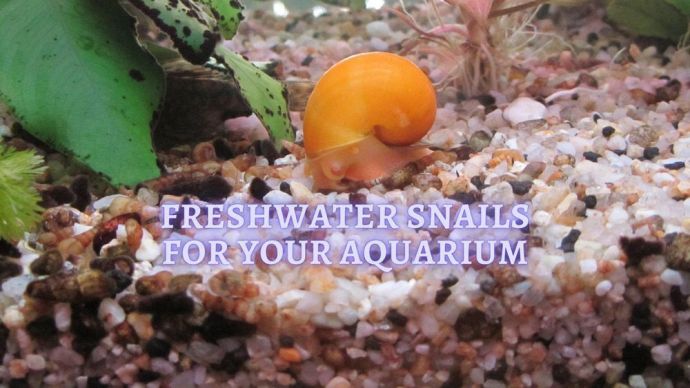 Fish Owners Tips Types of Freshwater Snails: Exotic cleaners for your Fish Tank
Fish Owners Tips Types of Freshwater Snails: Exotic cleaners for your Fish Tank - 1704
- 0









